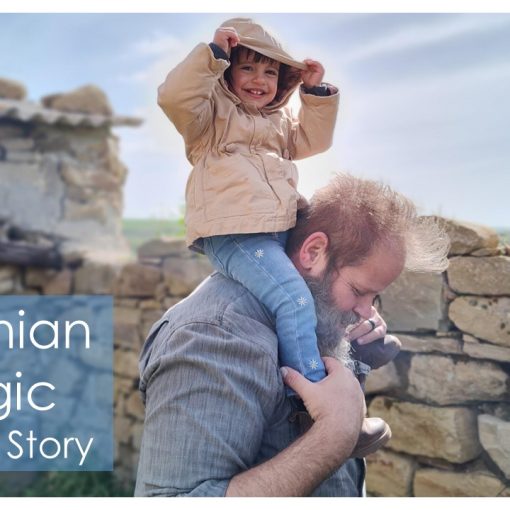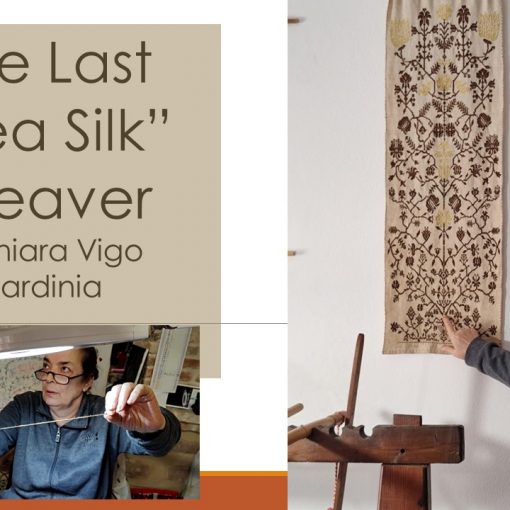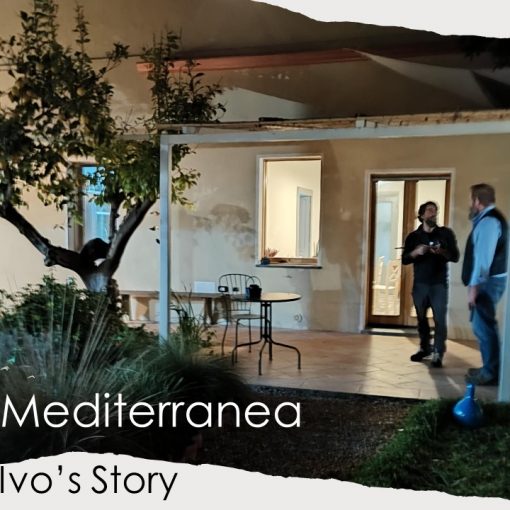Have you ever been to the Mediterranean shore? Join us as we hike these incredible vistas with our friend, Ivo, and tour the Port Flavia mine. I was in awe of the mining history in Sardinia, Italy and how much it had mirrored the industry in Michigan’s upper peninsula.
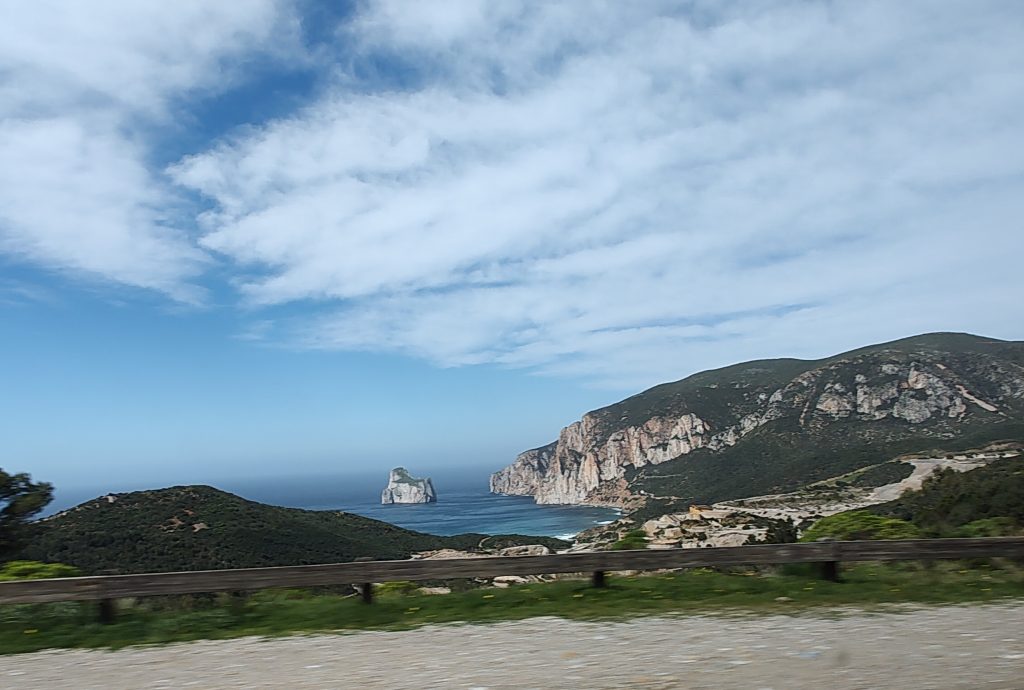
I made many involuntary vocalizations of admiration.
Our friend, Ivo, who we’d met four years ago as our Sardinian guide, had joined us for our February 2023 tour of Masua Mine and Port Flavia. (See the map below.) Driving along the island’s coastline we neared the engineering marvel of Port Flavia. I bounced in the backseat like an excited child, “WOWing” at the view.
Chuck, my husband, and I had been curious about the mining industry in Sardinia and how it mirrored Michigan’s upper peninsula’s copper mining. Ivo had explained, “I lined up an archeology professor to take us through the mine.” Ivo has connections all around Sardinia and had worked hard to organize authentic learning for us and his guests at Casa Mediterranea, his “cultural workshop” and hotel.
Just as we had arrived at our designated meeting spot, Ivo had received an enthusiastic phone call. Ivo paced the walkway as he responded to the agitated Italian voice on the other end of the line. Once Ivo hung up, he shook his head, “That was the professor he said he didn’t know what to do. His wife’s water had broken. I told him, ‘Don’t worry about us! Go! Go, be with your wife!’ ” Ivo laughed.
Masua Mine and Port Flavia
The three of us headed to Port Flavia and the Masua Mine. This mine had been active since the 1600’s producing zinc and lead ore. Then in the early 1920’s Cesare Vecelli engineered two tunnels simplifying the process of loading ore onto ships along the side of the cliff.
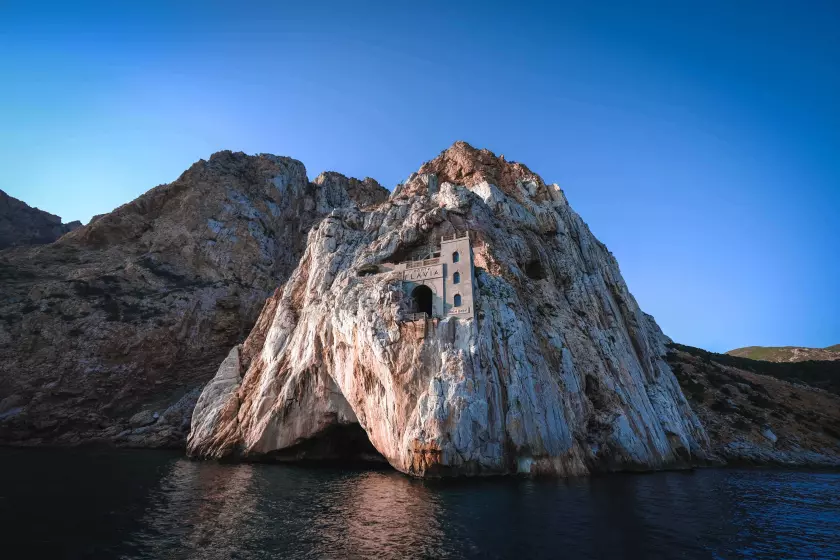
Photo credit: Claudia’s article in “Strictly Sardinia”
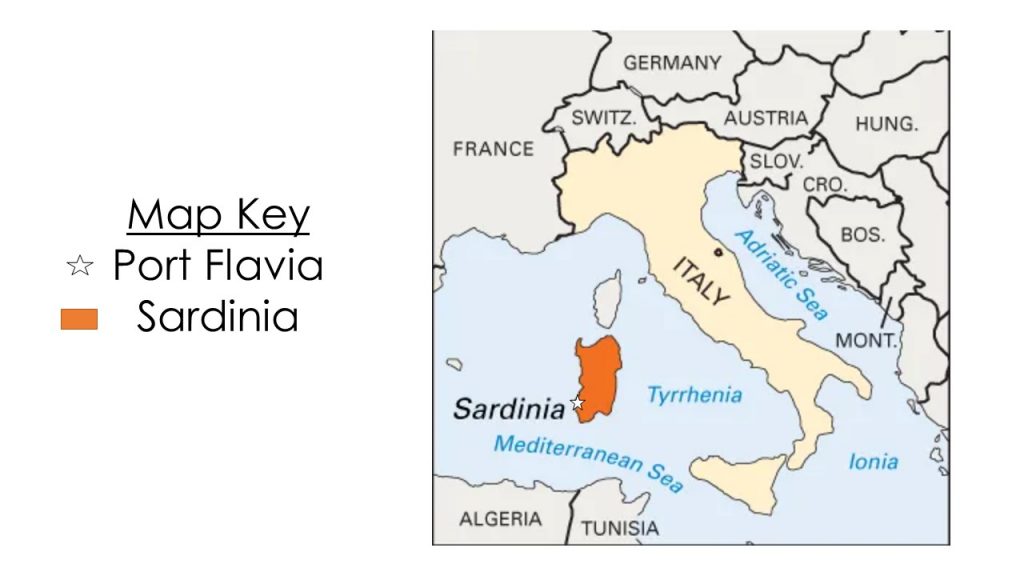
Mining had began to decline in the 1960’s. Port Flavia had closed in the 1990’s.
Tickets
Thank goodness Ivo was there to navigate our purchase of the tickets and organizing an employee who spoke English to bring us through the mine. Clad in white hard hats we made our way to the mine opening where a group of fifteen Italians waited. I usually strike up conversations with people, but my knowledge of Italian was “molto pocco.” (very little)
The Tunnels of Masua Mine
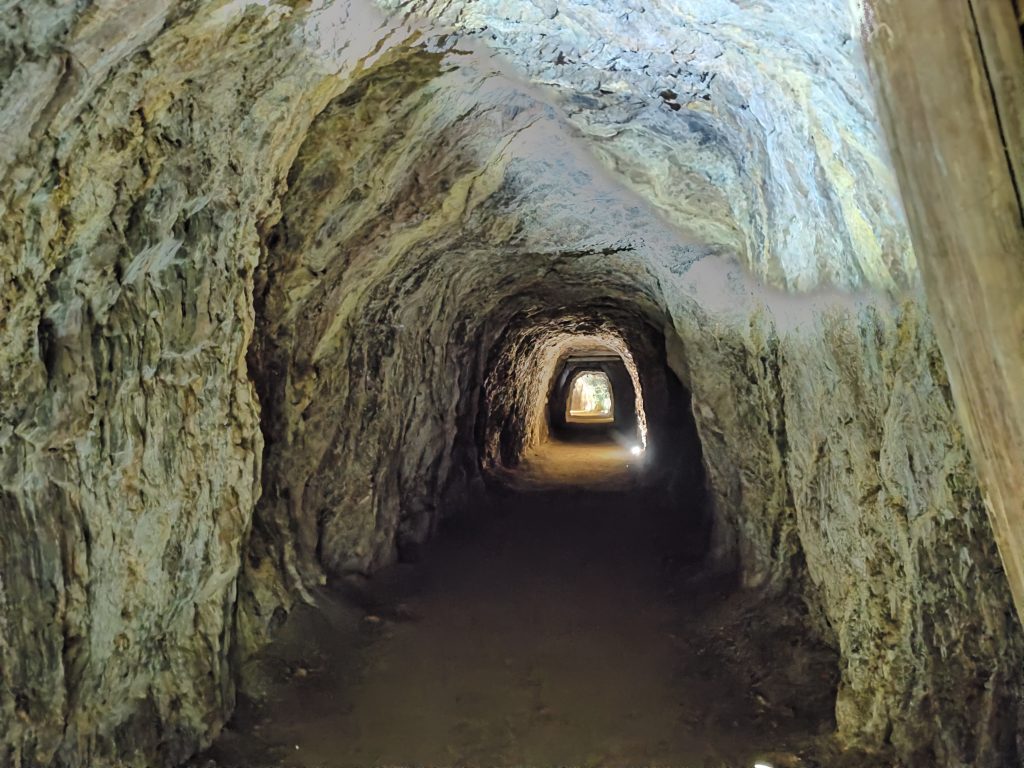
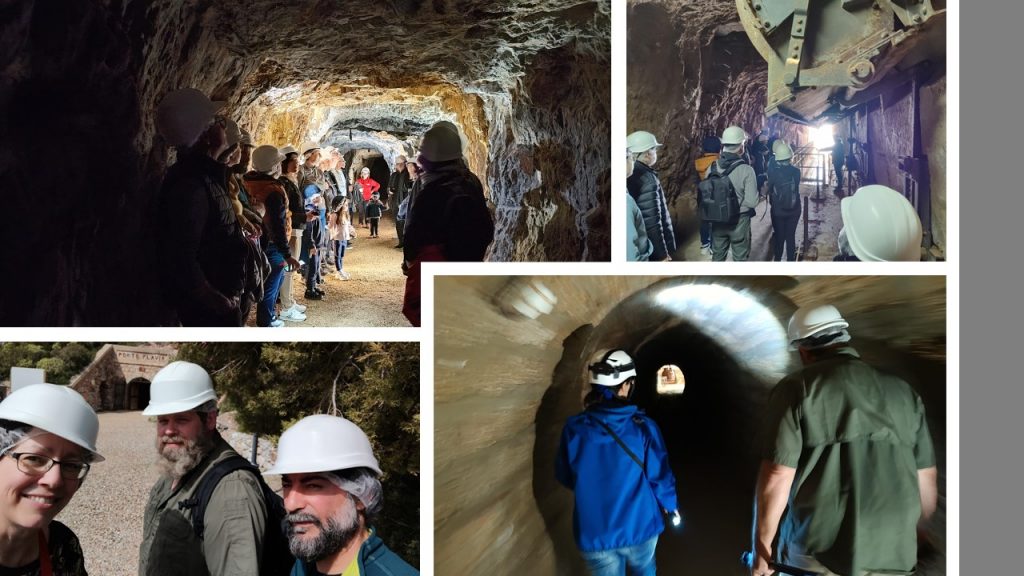
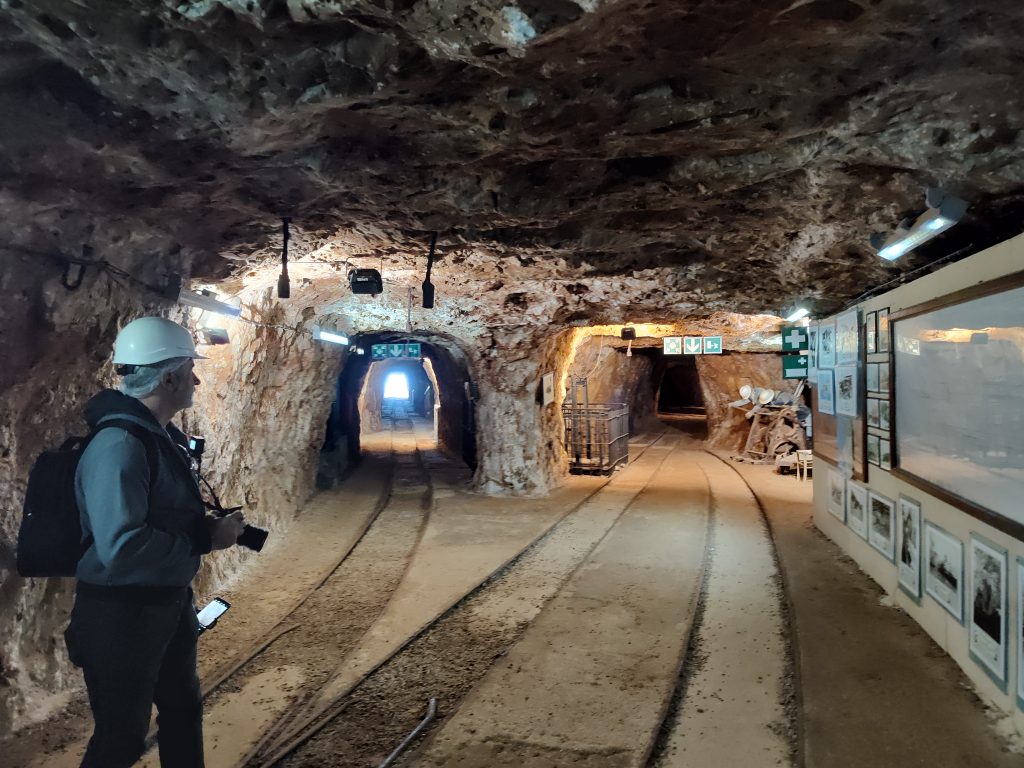
showing the history of this engineering marvel.
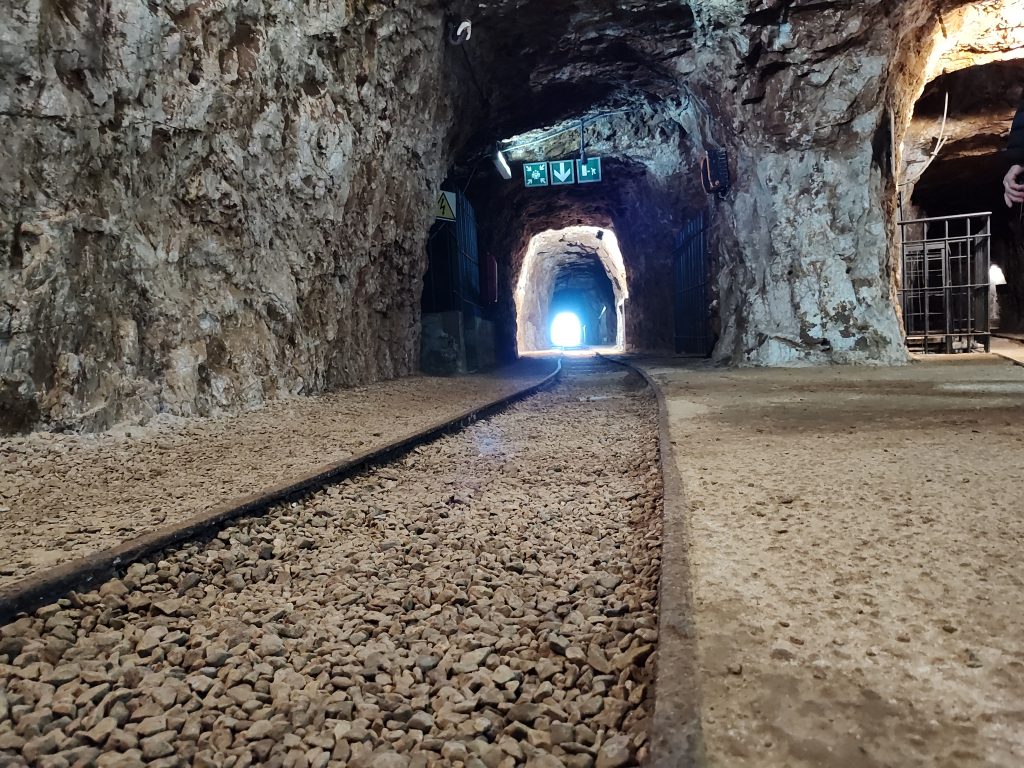
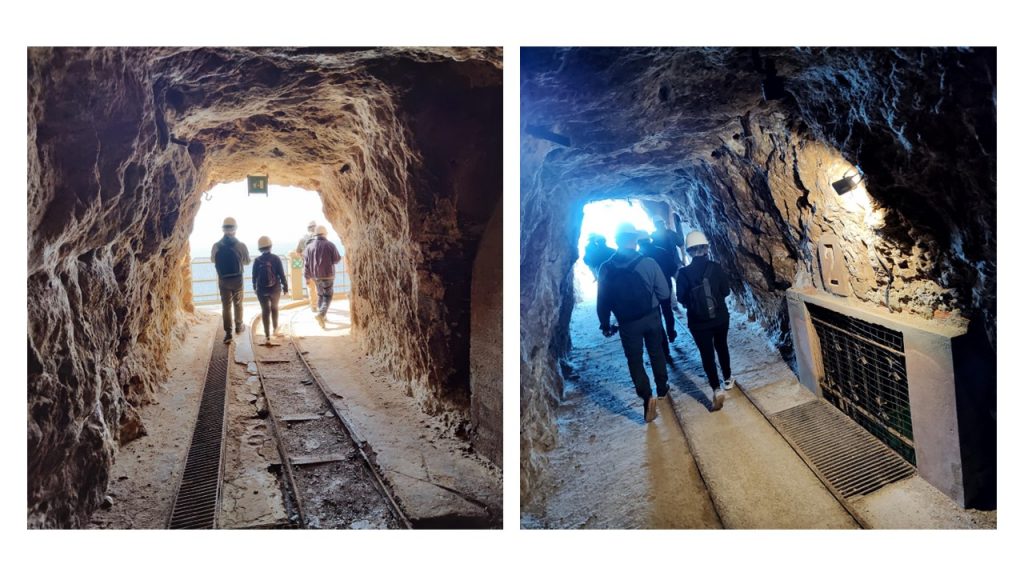
These shafts allowed ore to drop to a conveyor belt in the tunnel below.
The ore would travel along the belt to the waiting ship below.
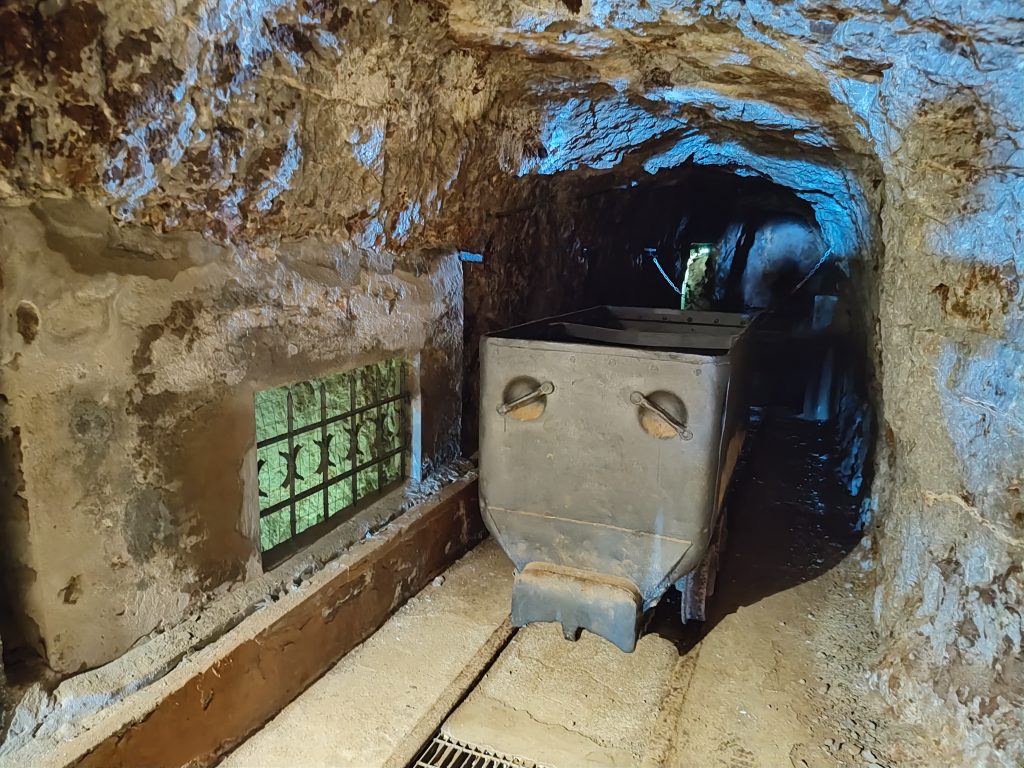
which was now covered with an iron grate.
Port Flavia
Ships would anchor along the cliff of Port Flavia to receive loads of ore. Cesare Vecelli’s ingenious method had saved the mining company time and money. Usually it would take well over a week to fill a ship’s cargo hold. Vecelli’s engineering cut this to a few days.
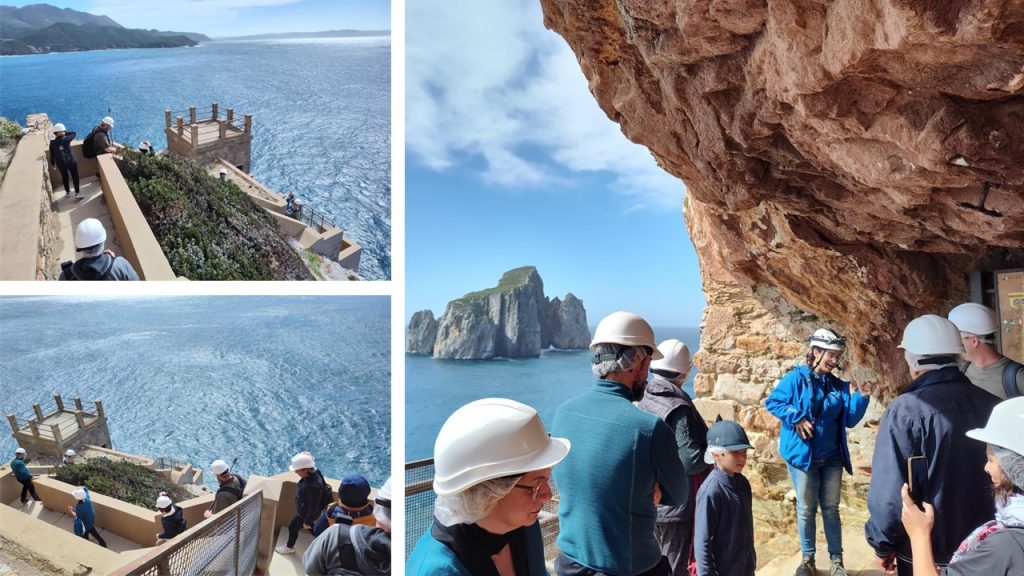
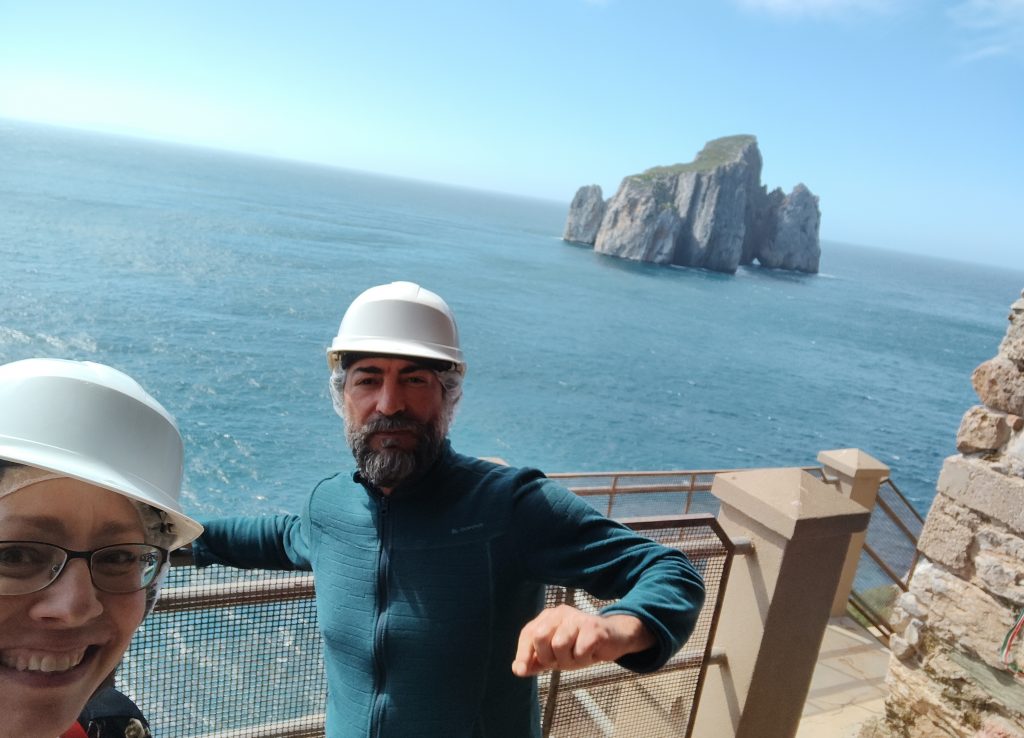
It had been positively delicious on this February morning.
A Mining Marvel
With the Mediterranean Sea being rough, it could take over a week to load steamships with ore. So in 1922 when the Belgian company, Vieille Montagne, took over the Masua Mine. They had wanted to design a more efficient system of loading ore into ships.
With the goal of making this process more efficient, Cesare Vecelli, devised a plan to build two tunnels, one above the other. Electric carts would carry and dump ore down shoots to the lower tunnel where conveyor belts moved the rocks to ships anchored next to the cliff.
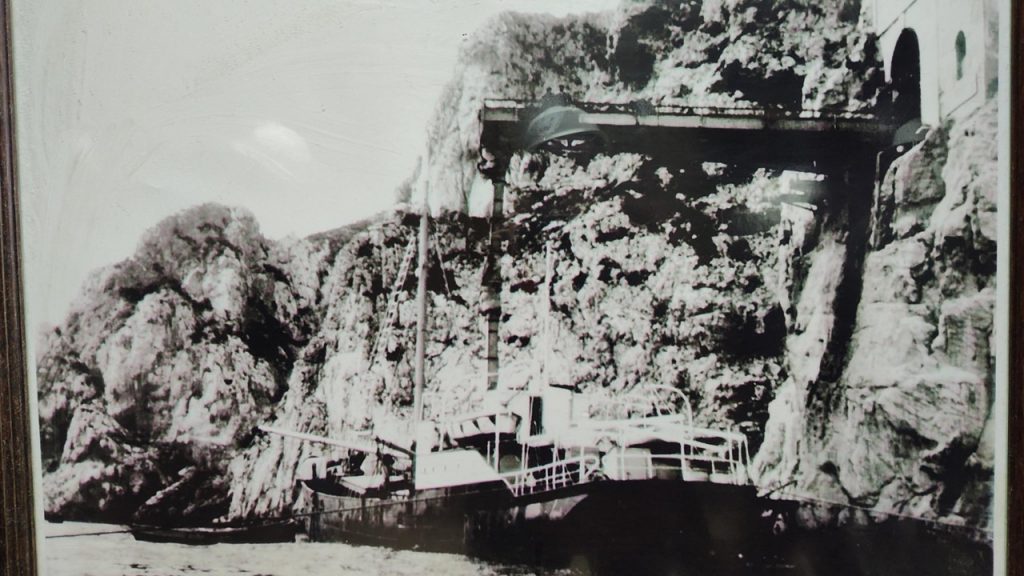
Photo Credit: Port Flavia’s underground museum area
As the project was being completed, Cesare had become a father to daughter, Flavia. He chose to name this port for his new baby.
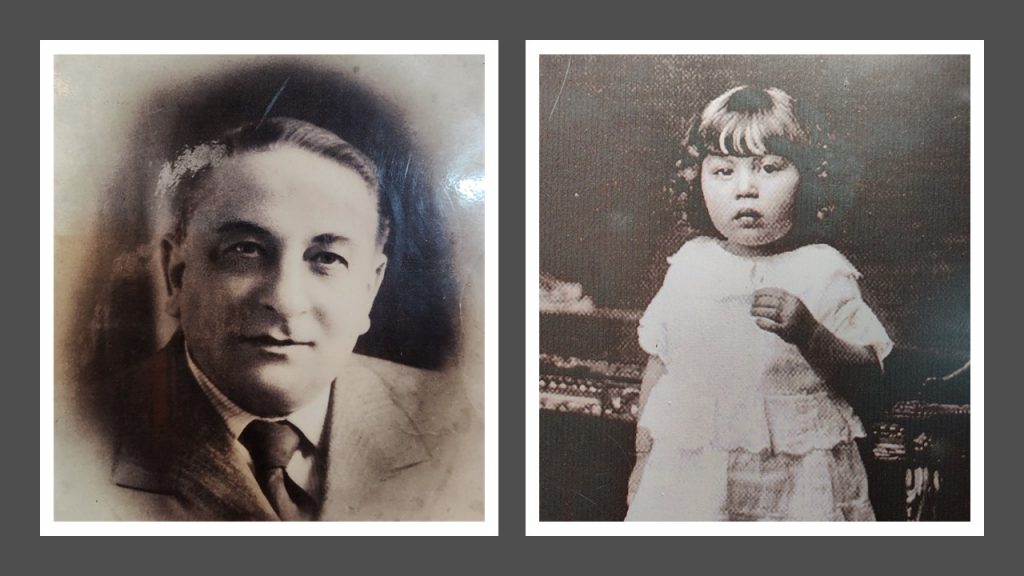
Stamping Mill
Rocky ore was then brought to a Stamping Mill where large anvils, powered by water wheels, would crush the large chunks into smaller pieces. This would make it easier to pick out the ore with further processing.
This had been the identical process halfway across the world in Michigan’s U.P. Fascinating!
The Delaware Mine – Michigan’s Upper Peninsula
While extracting ore was similar in both locations, hauling carts of material had been different.
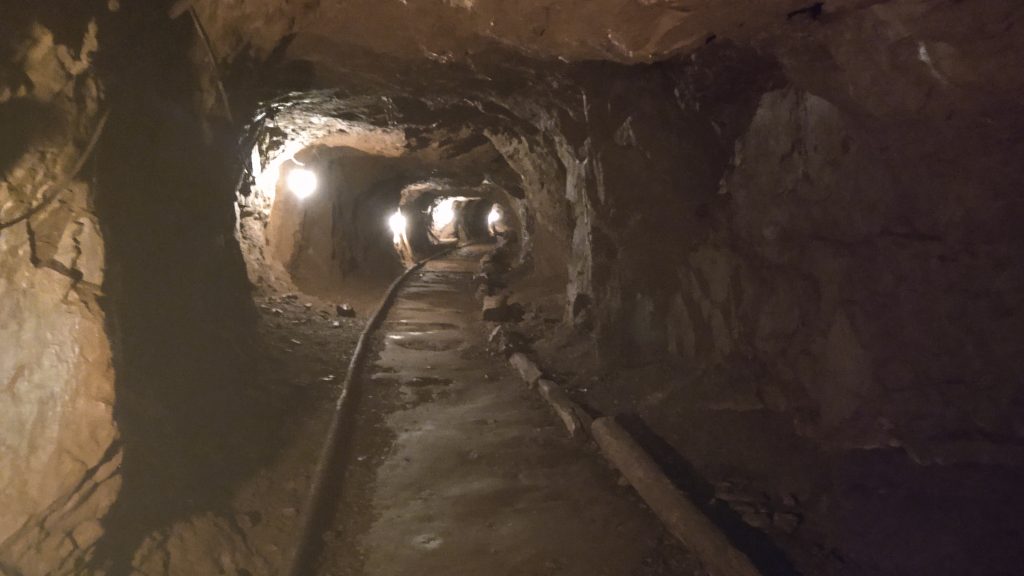
This tunnel measured 518 meters (1,700 feet)
The typical yield was 98.5% rock and only 1.5% copper. That’s a lot of work for very little return. In fact, sadly, the Delaware mine had never been profitable.
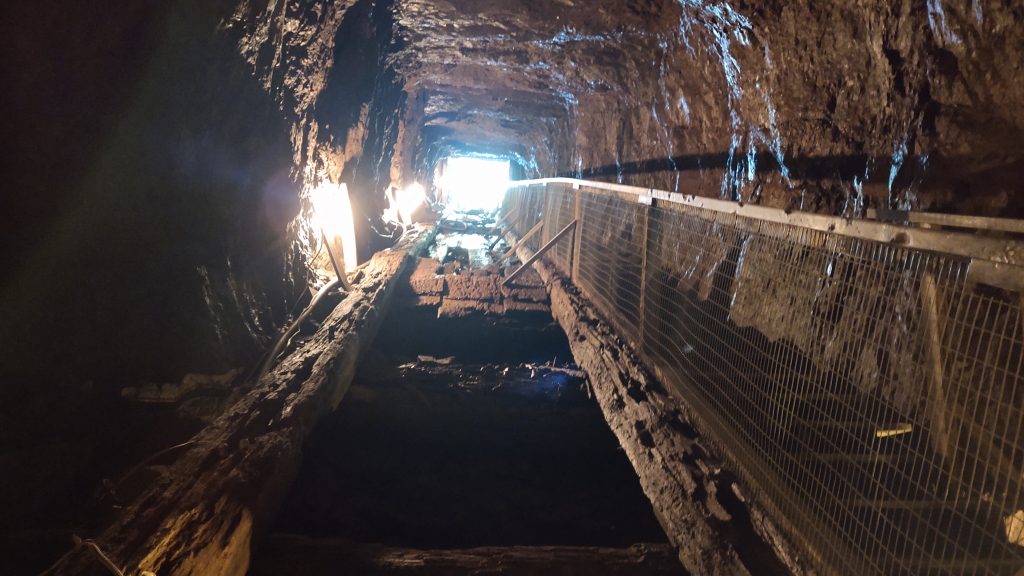
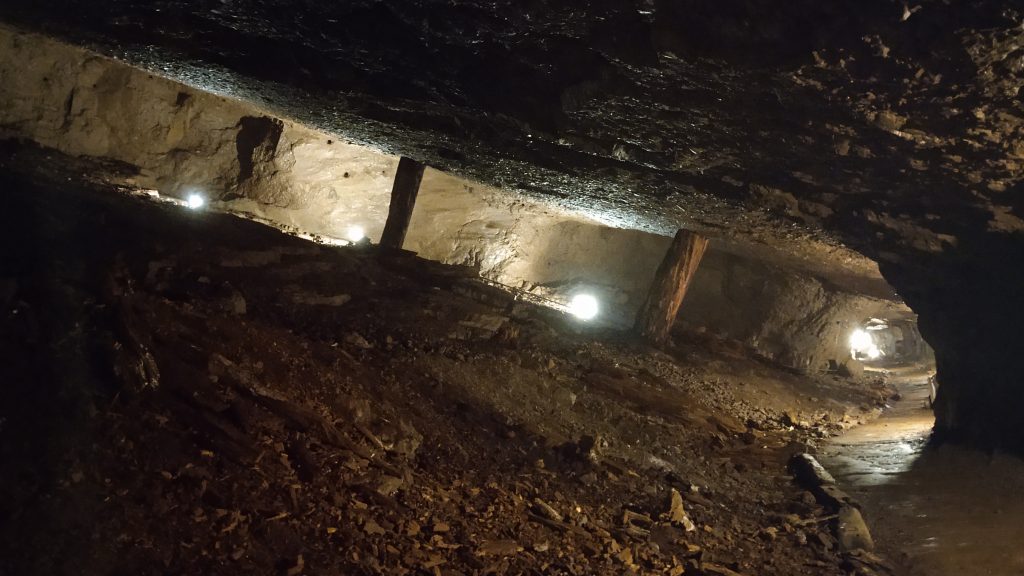
Parallel Processes
There are so many parallels when studying the mining of ore in Sardinia and Michigan’s upper peninsula. Miners at both locations had been full of courage, determination and strength. Tracing the steps of these workers in Masua (Sardinia) and in the Delaware (Michigan) mines has brought me a perspective of appreciation for their daunting tasks and how easy my life’s work has been. Each mine had been impressive examples of engineering.
Stay Tuned!
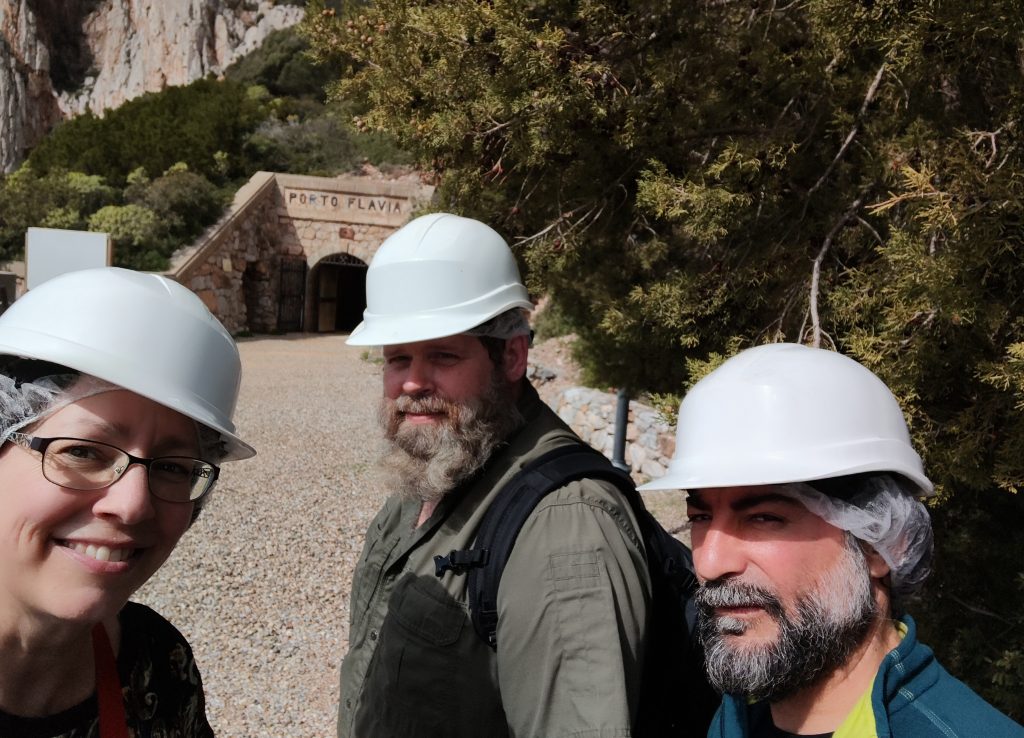
Stay tuned as Chuck and I continue to “look behind the curtain” or in these cases “under the ground” at how humankind has been resilient and courageous. We thrive on connecting with others and learning their stories to share. Thank you, Ivo, for this peek into Sardinia’s mining industry.
Related Links:
Ivo’s Story – Restless Viking Article
Casa Mediterranea, Nurachi, Sardinia – Ivo’s Cultural Workshop Hotel booking site
The Delaware Copper Mine in Michigan’s Keweenaw Peninsula
Resources:
Porto Flavia, Strictly Sardinia article


